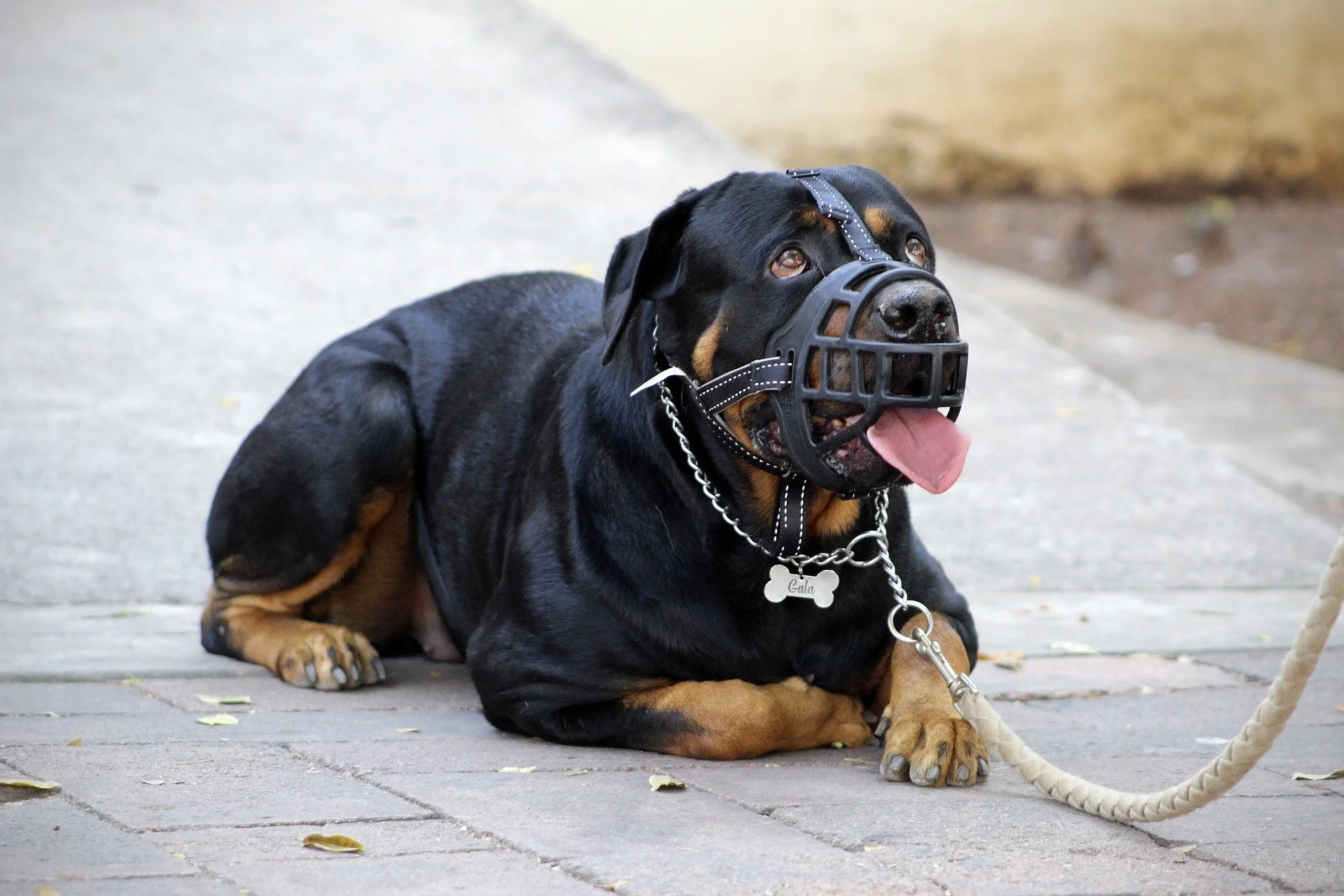Muzzle Training
This is conditioning your dog to like wearing a muzzle.
Overview
Teaching your dog to enjoy wearing a muzzle is important, even if they’re not a bite risk. There may be situations where a muzzle is necessary, and training them to be comfortable with it in advance can prevent stress.
For reactive dogs, wearing a muzzle while outside helps prevent biting incidents and signals to others to give space, reducing the chances of escalation.
Videos
Types of Muzzles
Learn about the pros and cons of different muzzle styles.
Calm Muzzle Conditioning
Learn how to have your dog enjoy the muzzle calmly.
Muzzle Training
Learn how to train the muzzle command without creating avoidance.
Types of Muzzles
Baskerville Basket Muzzle: This is the most recommended type, offering different sizes and allowing airflow, as well as the ability to drink water and take food from you. It’s versatile and comfortable for longer use.
Cloth Muzzle: Ideal for short-term use, like vet or grooming visits. It restricts mouth movement, preventing panting or drinking, so it should only be used briefly and for specific situations.
For more details, check out the video "Muzzles - What's the DIFFERENCE?" (above) and the link for purchasing Baskerville Muzzles.
Conditioning the Muzzle
Muzzle Conditioning: Stage 1 - Getting Your Dog Used to the Muzzle
Start slow and calm, working through each step for a few days to a week. The goal is to have your dog willingly put their nose in the muzzle, not for you to put it on them.
Introduce the Muzzle: Place the muzzle on the floor. Mark and reward when your dog investigates or touches it. Scatter treats near the muzzle to encourage exploration.
Increase Interaction: Pick up the muzzle and mark/reward as your dog looks at or touches it. Make this act rewarding.
Encourage Nose Entry: Hold the muzzle so your dog can put their nose in it. Use treats at the other end to lure them into it. Gradually increase the distance they need to go to get the reward, starting from just touching it.
Build Duration: Once your dog comfortably places their nose in the muzzle, reward them for holding it for longer, aiming for 10 seconds.
When your dog is comfortable with this, you're ready to move to the next stage.
Muzzle Conditioning: Stage 2 - Attaching the Back Strap
Warm-Up: Have your dog put their nose in the muzzle a few times to get them comfortable.
Pretend Attachment: Pretend to attach the back strap, marking and rewarding if they stay calm. Repeat until they’re comfortable with you touching the back of their neck.
Attach Strap: Buckle the back strap (near the ears) and mark/reward immediately, then remove the strap. Repeat until the dog is comfortable with this action. You may need to do this in small incremental baby steps.
Build Tolerance: Gradually increase the time your dog wears the muzzle before removing it. Feed them their meals through the muzzle to create a positive association. If they show discomfort (pawing at it, rubbing face on ground) wait until they stop, take it off, and don’t have them wear it for as long for a while.
We want this muzzle to predict rewards but nothing else like going for a walk or going to the vet. It’s just an item they sometimes wear (and are more than happy to) and sometimes they go outside and sometimes they don’t when it’s on.



